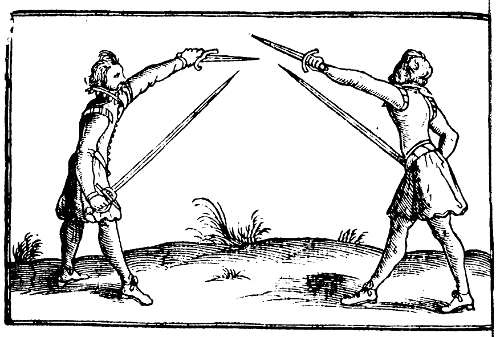A&S
Swetnam Ch. 12 Three manner of waies for the holding of a Rapier
This is part of an ongoing project to summarize and provide SCA focused commentary on The Schoole of the Noble and Worthy Science of Defence by Joseph Swetnam, published in 1617.
For links to the other sections of the Swetnam Project please go here.
I am using this facsimile: http://tysonwright.com/sword/SwetnamSchooleOfDefence.pdf for the project.
We just finished covering stance/guard and a few basic parries. Now we move on to the next part of this section. I’m not sure why this section of chapter 12 is so long.
Three mannor of waies for the holding of a Rapier.
 Swetnam tells us that there are three ways to hold a rapier.
Swetnam tells us that there are three ways to hold a rapier.
- With the thumb upon the rapier blade (he calls this the natural fashion)
- With the whole hand in the pummell, I believe he means on the grip of the rapier, with the thumb locking on the forefinger.
- Gripping the pommel (button of the pummell) with your fingers and palm while your index and thumb are on the grip.
